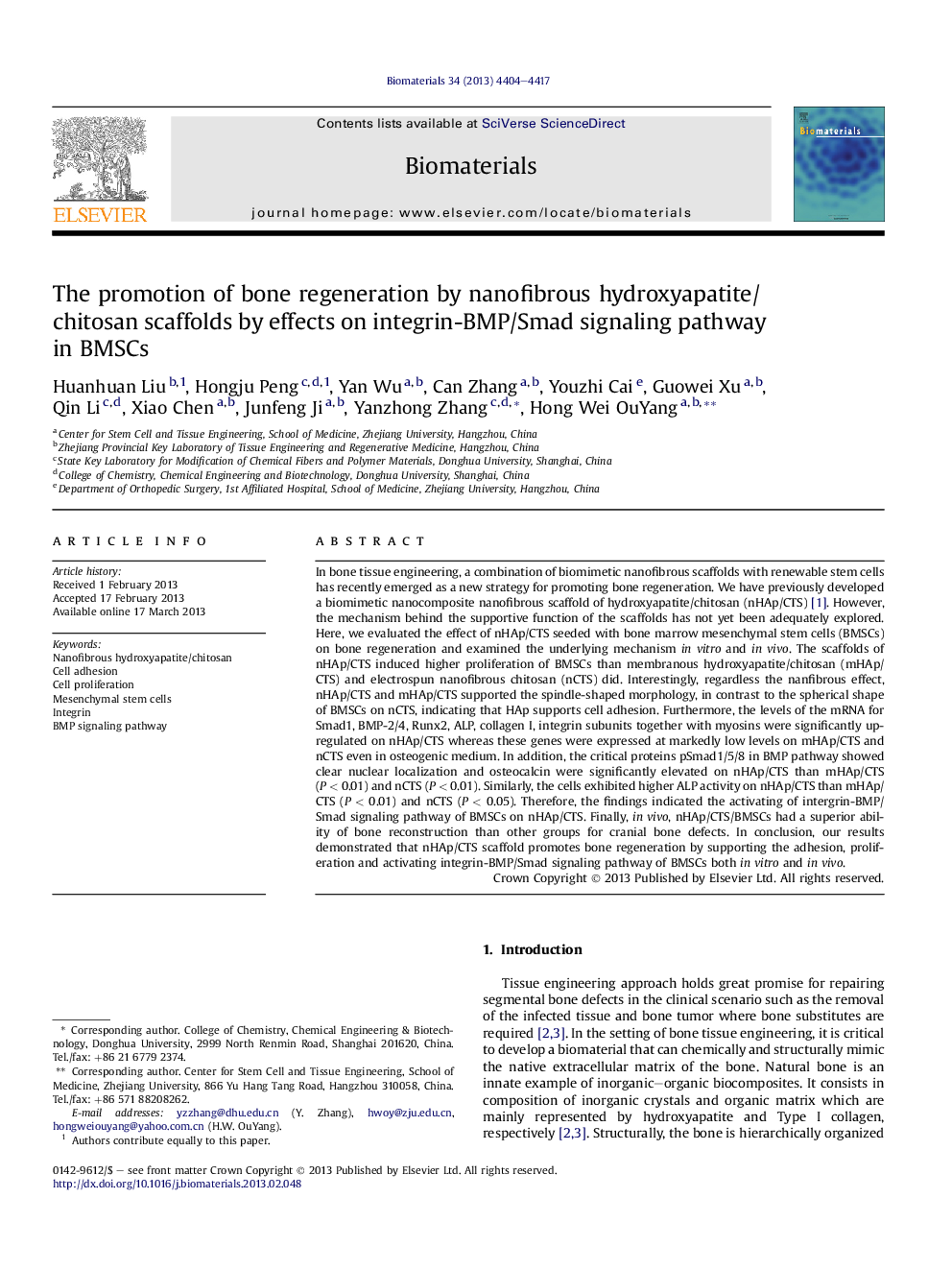| کد مقاله | کد نشریه | سال انتشار | مقاله انگلیسی | نسخه تمام متن |
|---|---|---|---|---|
| 6118 | 463 | 2013 | 14 صفحه PDF | دانلود رایگان |

In bone tissue engineering, a combination of biomimetic nanofibrous scaffolds with renewable stem cells has recently emerged as a new strategy for promoting bone regeneration. We have previously developed a biomimetic nanocomposite nanofibrous scaffold of hydroxyapatite/chitosan (nHAp/CTS) [1]. However, the mechanism behind the supportive function of the scaffolds has not yet been adequately explored. Here, we evaluated the effect of nHAp/CTS seeded with bone marrow mesenchymal stem cells (BMSCs) on bone regeneration and examined the underlying mechanism in vitro and in vivo. The scaffolds of nHAp/CTS induced higher proliferation of BMSCs than membranous hydroxyapatite/chitosan (mHAp/CTS) and electrospun nanofibrous chitosan (nCTS) did. Interestingly, regardless the nanfibrous effect, nHAp/CTS and mHAp/CTS supported the spindle-shaped morphology, in contrast to the spherical shape of BMSCs on nCTS, indicating that HAp supports cell adhesion. Furthermore, the levels of the mRNA for Smad1, BMP-2/4, Runx2, ALP, collagen I, integrin subunits together with myosins were significantly up-regulated on nHAp/CTS whereas these genes were expressed at markedly low levels on mHAp/CTS and nCTS even in osteogenic medium. In addition, the critical proteins pSmad1/5/8 in BMP pathway showed clear nuclear localization and osteocalcin were significantly elevated on nHAp/CTS than mHAp/CTS (P < 0.01) and nCTS (P < 0.01). Similarly, the cells exhibited higher ALP activity on nHAp/CTS than mHAp/CTS (P < 0.01) and nCTS (P < 0.05). Therefore, the findings indicated the activating of intergrin-BMP/Smad signaling pathway of BMSCs on nHAp/CTS. Finally, in vivo, nHAp/CTS/BMSCs had a superior ability of bone reconstruction than other groups for cranial bone defects. In conclusion, our results demonstrated that nHAp/CTS scaffold promotes bone regeneration by supporting the adhesion, proliferation and activating integrin-BMP/Smad signaling pathway of BMSCs both in vitro and in vivo.
Journal: Biomaterials - Volume 34, Issue 18, June 2013, Pages 4404–4417